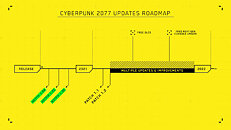Star Wars Jedi: Survivor Receives First Patch on PC Today, Respawn Entertainment Issues Apology Message
Respawn Entertainment, the Star Wars division at Electronic Arts and Lucasfilm Games have today released their first patch for the PC version of Star Wars Jedi: Survivor - some folks must have been working like mad over the weekend in order to address some of the problems encountered shortly after the game's launch last Friday (April 28). The EA Star Wars Twitter account issued a statement regarding the initial batch of patches for all platforms affected: "Today a patch has become available for the PC version of Star Wars Jedi: Survivor, and tomorrow (5/2) we'll also be issuing a patch for PlayStation 5 and Xbox Series X|S. We are hard at work on patches that will further improve performance and fix bugs across all platforms. There are more updates to come across all platforms, and we will share that timing when it is available."
The patch notes for today's PC update only mention "performance improvements for non-raytraced rendering" so it seems the developers have a lot more work to do over the coming weeks. The situation on current generation PlayStation and Xbox consoles looks to largely the same, and tomorrow's fix list is extensive (the same problems have already been addressed on PC with today's patch). TPU's own resident reviewer extraordinaire went in-depth and explored Star Wars Jedi: Survivor's technical issues this weekend - part of W1zzard's conclusion was very unkind: "We're now paying $70 to beta-test an unpolished turd that they call an AAA game—not the first time this year. I'm starting to wonder if these companies aren't slowly eroding their customer base by delivering broken products over and over again."
The patch notes for today's PC update only mention "performance improvements for non-raytraced rendering" so it seems the developers have a lot more work to do over the coming weeks. The situation on current generation PlayStation and Xbox consoles looks to largely the same, and tomorrow's fix list is extensive (the same problems have already been addressed on PC with today's patch). TPU's own resident reviewer extraordinaire went in-depth and explored Star Wars Jedi: Survivor's technical issues this weekend - part of W1zzard's conclusion was very unkind: "We're now paying $70 to beta-test an unpolished turd that they call an AAA game—not the first time this year. I'm starting to wonder if these companies aren't slowly eroding their customer base by delivering broken products over and over again."





























































